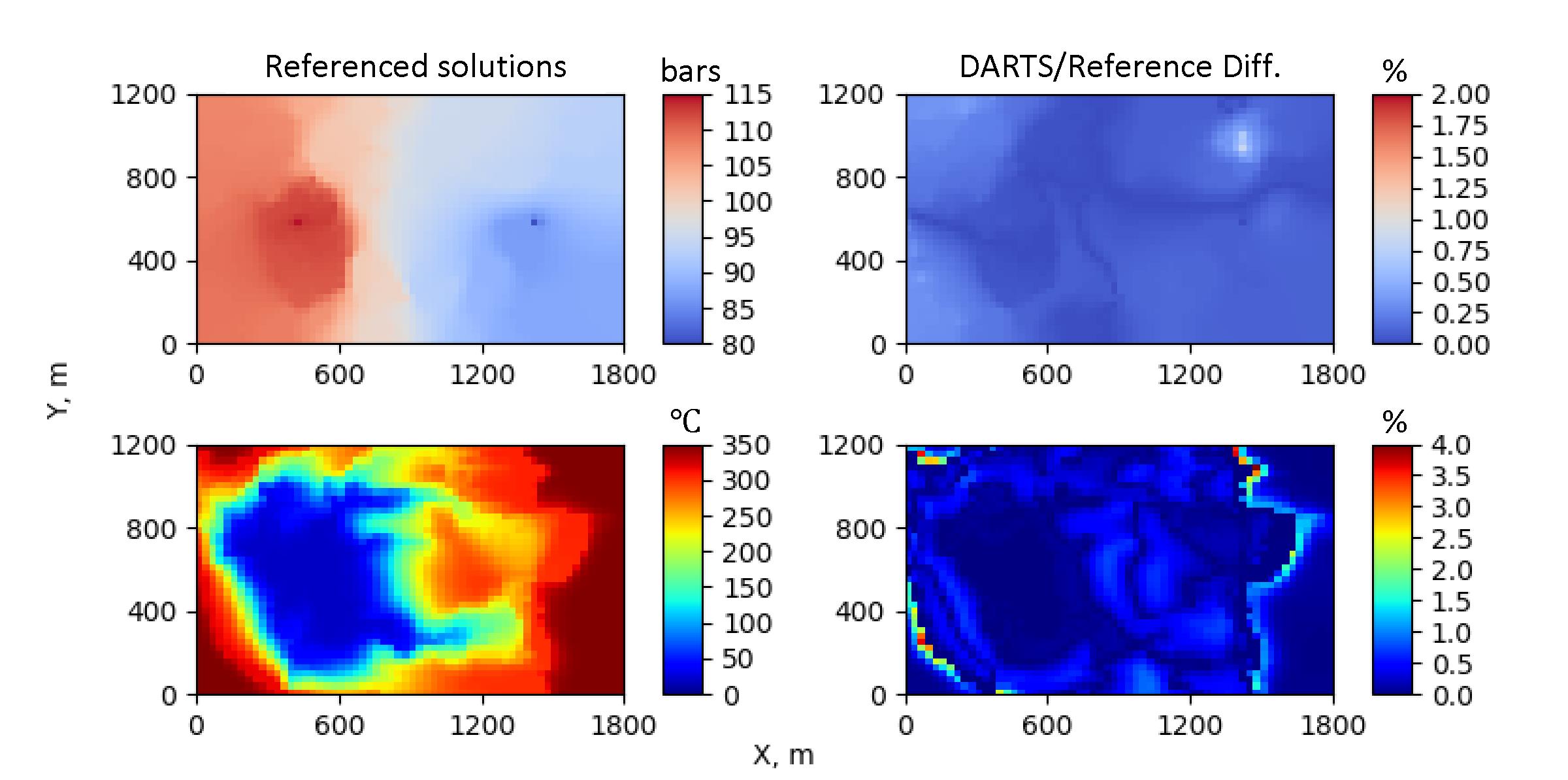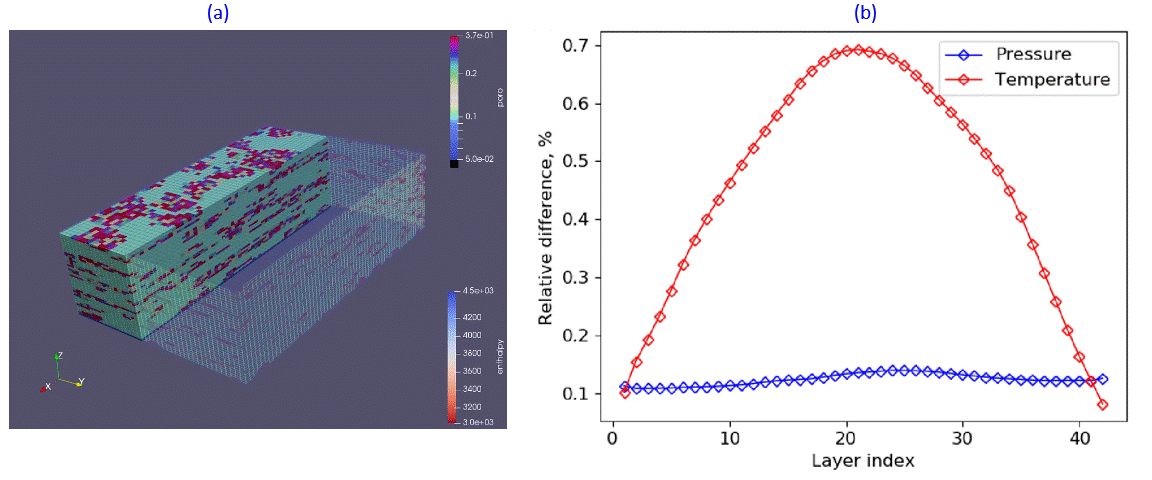Accurate prediction of temperature and pressure distribution is essential for geothermal reservoir exploitation with cold water re-injection. Depending on our knowledge about the heterogeneous structure of the subsurface, the reservoir development scheme can be optimized and the overall lifetime of the geothermal field can be extended. In DARTS, the molar formulation with pressure and enthalpy as primary variables is selected to solve the governing system describing the geothermal model. Besides, the fully-coupled fully-implicit two-point flux approximation (TPFA) on unstructured grids is implemented to solve the mass and energy conservation equations. For the nonlinear solution, we employ the recently developed Operator-Based Linearization (OBL) approach. The solutions of DARTS is compared with the state-of-the-art simulation frameworks using a set of benchmark tests1.

Fig.1: 2D results comparison between DARTS and TOUGH22 for high-enthalpy test case1
DARTS achieves a good match for both low- and high-enthalpy conditions in comparison to TOUGH22, see Fig.1 for example. Similar accuracy DARTS demonstrated in comparison with AD-GPRS3 with an example shown in Fig.2 for elongated in z-direction example of the 3D geothermal reservoir. At the same time, DARTS provides high performance and flexibility of the code due to the OBL approach, which makes it particularly useful for uncertainty quantification in processes involving complex physics.

Fig.2: Cold water plum propagation (a) and la
